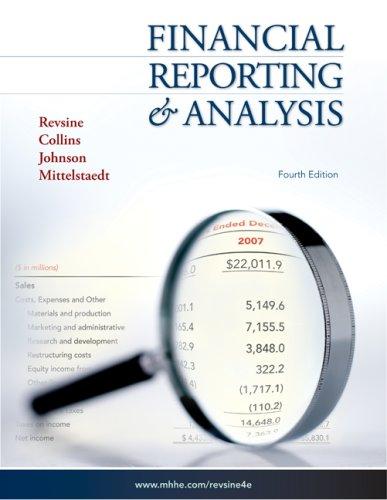On January 1, 1998, Chain Corporation issued ($5) million of 7% coupon bonds at par. The bonds
Question:
On January 1, 1998, Chain Corporation issued \($5\) million of 7% coupon bonds at par. The bonds mature in 20 years and pay interest semiannually on June 30 and December 31 of each year. On December 31, 2008, the market interest rate for bonds of similar risk was 14%, and the market value of Chain Corporation bonds (after the December 31 interest payment) was \($3,146,052\).
Although the company’s books are not yet closed for the year, a preliminary estimate shows net income to be \($500,000.\) This amount is substantially below the \($3\) million management had expected the company to earn. The company has long-term debt totaling \($7.5\) million (including the \($5\) million bond issue) and shareholders’ equity of \($12.5\) million (including the \($500,000\) of estimated net income). This means the company’s long-term debt-to-equity ratio is 60%.
Unfortunately, a covenant in one of the company’s loan agreements requires a long-term debt-to-equity ratio of 55% or less. Violating this covenant gives lenders the right to demand immediate repayment of the loan principal. Worse yet, a “cross default” provision in the \($5\) million bond makes it immediately due and payable if the company violates any of its lending agreements.
Because the company does not have the cash needed to repurchase the bonds, management is considering a debt-for-debt exchange in which the outstanding 7% bonds would be replaced by new 14% bonds with a face amount of \($3.2\) million. The interest rate on the new bonds is equal to the market interest rate.
Required:
1. Prepare a journal entry to record the swap on December 31, 2008. (Any gain or loss to the company would be taxed at 35%, and the tax should be included in your entry.)
2. What would the company’s debt-to-equity ratio be after the swap?
3. What impact would the transaction have on net income for the year?
4. How else could management have avoided violation of the loan covenant?
Step by Step Answer:






